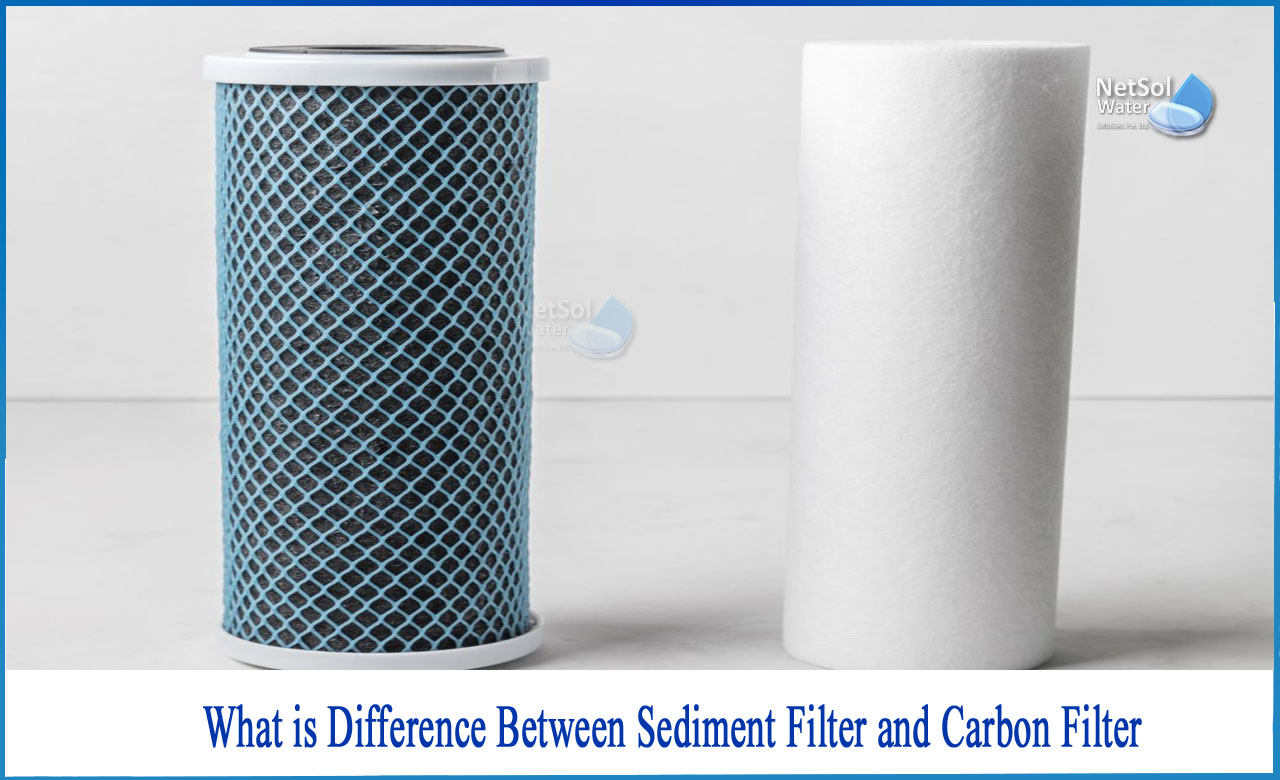What is an Activated Carbon Filter?
An activated carbon filter may significantly reduce taste, odour, and chlorine levels. Chlorine and chloramines are used in water/wastewater treatment plants, which produce cancer-causing by-products. These disinfectants stay in your drinking water for a long time, giving it a chemical taste.
Carbon removes organic molecules from water, making it taste and smell better. Contaminants stick to a carbon filter's surface, and only pure water flows to your home.
What is difference between Sediment Filter and Carbon Filter?
Both sediment and carbon filters have a role in a comprehensive system that aims to provide the cleanest water possible.
Sediment and carbon filters can be used separately or in tandem to remove the particles that taint your water and harm your health. These filters, on the other hand, serve various purposes.
When shopping for a new water filter, it's crucial to know what a sediment filter and a carbon filter are, how they operate, and what the primary distinctions are when comparing sediment and carbon filters.
What is sediment filtration?
Filters for suspended solids, often known as sediment, turbidity, or particles, are used in sediment filters. As your water runs through the system, a sediment filter acts like a net, catching undesired dirt particles.
The filter features a natural media bed (sand, anthracite, etc.). Unwanted dirt particles become caught when the water travels through this bed. The water flows into the filter, leaving the sediment behind, and then out of the filter, resulting in particulate-free water.
Sediment filtersusually perform a good enough job of reducing undesirable particle levels to trace quantities that are considered acceptable for drinking water. With a sediment filter, you can receive clean drinking water.
What are carbon filters?
Carbon filters not only remove particles from water, but also chlorine, volatile organic compounds (VOCs), smell, and bad taste. Activated carbon is used in carbon filters, and it is created using a unique manufacturing technique that provides additional bonding sites. Impurities such as VOCs and heavy metals get chemically bound to the carbon as water travels through a carbon filter. As the water passes through the filter, many undesired contaminants become trapped to the carbon bonding sites, and the water emerges substantially cleaner than when it entered.
Impurities that bind to carbon are effectively removed by carbon filters. Not all contaminants have this effect. Sodium, for example, may pass right through carbon filters and not be removed. Carbon filters can eliminate 100 of the 129 pathogens detected in tap water, according to the Environmental Protection Agency (EPA).
Sediment filtration vs. Carbon filtration
Because sediment and carbon filters accomplish various tasks, you'll need to make educated decisions about the type of filter you'll need to provide your household or a commercial or industrial property with the best and cleanest water possible. You don't have to pick between sediment and carbon filtration, thankfully, a two-stage system might be implemented.
A two-stage system begins with a sediment filter, which traps dirt particles that would otherwise block the carbon filter. The purer and cleaner water may then go through the carbon filter, where the remaining undesirable substances will bind with the carbon and be removed as well.
Both sediment and carbon filters, when used independently, can eliminate some of the items that get into your water and produce terrible odours, disagreeable tastes, and perhaps health risks over time. Sediment and carbon filters, when used together, may remove enough contaminants from your water to make it taste and smell fantastic.



